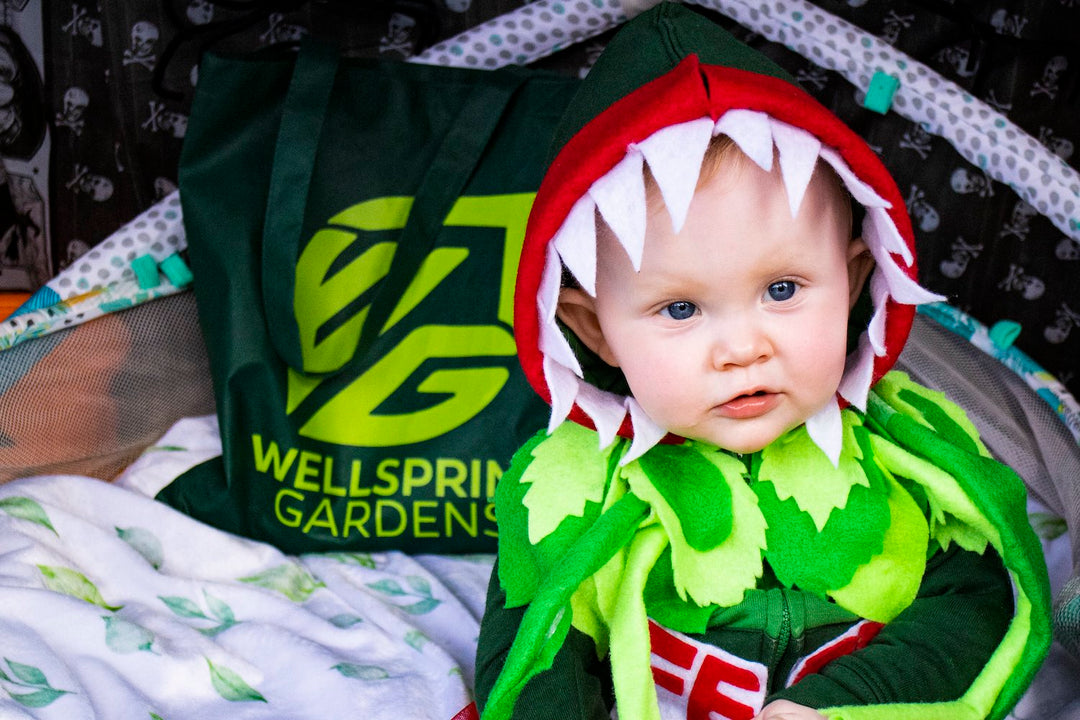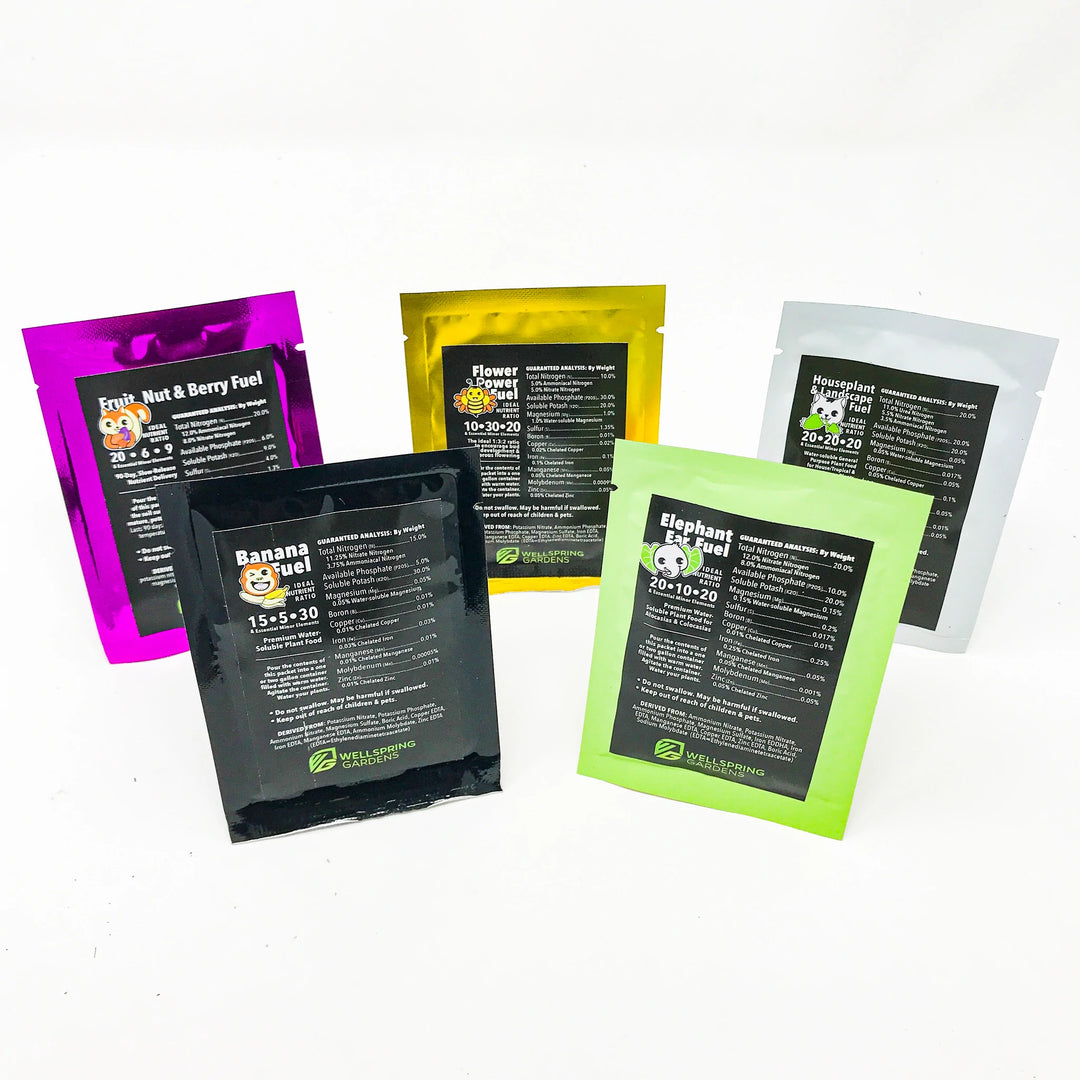Carnivorous Plant Care
You may have become intrigued with carnivorous plants after watching the 60s cult classic, The Little Shop of Horrors. Or perhaps you witnessed an insect bystander being enveloped in the jaws of a Venus fly trap. Either way, somewhere along the way you realized that carnivorous plants aren't really man-eating monsters with razor-sharp teeth, but here are some things you may not know about them.
There are five main types of carnivorous plants:
- Sundews (Drosera spp.): The leaves are covered with sticky hairs which capture and digest insects.
- Venus Flytraps (Dionaea muscipula): They have upright traps enclose when touched to trap insects.
- Pitcher plants: Insects fall into their tall vase-like tubes. There are five different types: North American (Sarracenia spp.), Tropical (Nepenthes spp.), West Australian (Cephalotus spp.), Sun Pitchers (Heliamphora spp.), and Cobra Lily (Darlingtonia spp.)
- Butterworts (Pinguicula spp.): They usually have green leaves that appear glossy but are actually sticky.
- Bladderworts (Utricularia spp.): They have incredibly ornamental flowers, and they catch insects with their bladder-like organ roots.
Insects beware! Sundew leaves are covered with sticky hairs which capture and digest insects. Sundews are mostly perennial but a few are annual. Scientific name: Drosera spp.
- Average mature height: low-growing (under 2 inches)
- Dormancy: Temperate varieties need a dormant season so they can form a hibernacula. When sundews come out of dormancy, new leaves emerge from the hibernacula.
- Fertilizer: Do not fertilize. Allow sundews to catch occasional insects though.
- Light: Bright, almost full sun.
- Soil: Many soils are suitable, such as long-fiber sphagnum, pure peat, pure sand, or a combination of any of these. Long-fiber sphagnum moss is best. Try ours here.)
- Water: Most sundews do best with high humidity and almost constantly saturated soil. Place potted plants in a shallow tray and fill the tray with clean, distilled water or rainwater to keep the soil saturated.
GROWING VENUS FLYTRAPS (DIONAEA MUSCIPULA)
Venus Flytraps have upright traps that have hinged leaves with three or four sensitive hairs in the center of each lobe. When an insect touches the hairs, the hinge mechanism is triggered, and the leaves close rapidly to trap the insect. Scientific name: Dionaea muscipula.
- Average mature height: low-growing (under 6 inches)
- Light: For the healthiest plants, provide 12 hours of light and 4 hours of direct sun during the spring through fall, flytraps' active growing season.
- Soil: Use only soil that has no fertilizer added. Peat moss with some perlite or long-fiber sphagnum moss are the most common choices. Try our sphagnum moss.
- Trimming: Dead leaves turn black and can be safely trimmed away with scissors if desired.
- Water: Carnivorous plants do best when saturated in water. Use filtered, distilled, or rainwater for best results. Plant in a pot with holes and then place it in a saucer or tray of water. Keep water in the tray filled to keep the pot in about 1/4 inch of water.
- Zones: 6-10
GROWING SARRACENIA PITCHER PLANTS
Sarracenia Pitcher Plants have tall, vase-like tubes with hoods that are perfect for trapping insects.
- Average mature height: 2-3 feet
- Growing location: Most Sarracenia plants do best outdoors so they can grow in high light and have insects available.
- Light: Full sun. Species that are shorter in height can handle slightly less light than taller species.
- Soil: Use only soil that has no fertilizer added. Peat moss with some perlite or long-fiber sphagnum moss are the most common choices. Try our sphagnum moss.
- Water: Purified water is best. Carnivorous plants love water. Keep them in trays of water so they never dry out.
GROWING NEPENTHES PITCHER PLANTS
Nepenthes Pitcher Plants are tropical plants native to southeast Asia, Madagascar, and Australia. Most types have a vining habit, but some remain compact. They look great in a hanging basket.
There are two distinct types of Nepenthes based on the altitude where they typically grow:
- Highland: above 3,000 feet
- Lowland: below 3,000 feet
All types are tropical and should be protected from temperatures below 40 degrees Fahrenheit. Highland temperatures: 65 to 90 degrees Fahrenheit during the day and 45 to 65 degrees at night. Lowland temperatures: 65 to 90 degrees during the day and 60 to 70 degrees at night.
- Fertilizer: Nepenthes don't need much else besides an occasional insect for food, but if desired, a 1/8 dilution of liquid fertilizer solution can be poured sparingly into their pitchers.
- Growing location: Nepenthes' most ideal growing location is in the same environment and humidity as greenhouse orchids. Although Nepenthes typically like heat and humidity, many adapt to lower humidity and do well as house plants.
- Light: Bright, indirect sun, 50% shade.
- Soil: Water-retaining soil that's low in nutrients. We grow ours in sphagnum moss. Try ours.
- Water: Purified water is best. Carnivorous plants love water. Keep them in trays of water so they never dry out.
Dead/shriveled pitchers? Nepenthes pitcher plants may or may not have pitchers at the time of shipping but are mature enough that they will soon grow new ones. If you receive a pitcher plant with dead/shriveled pitchers, this will not impact the health of the plant; just clip the old pitchers wth sterile scissors to make room for new ones to grow.
Shop for carnivorous plants at Wellspring Gardens.
Wish your thumb were a little greener? Visit our plant care page and become a gardening guru in no time.






